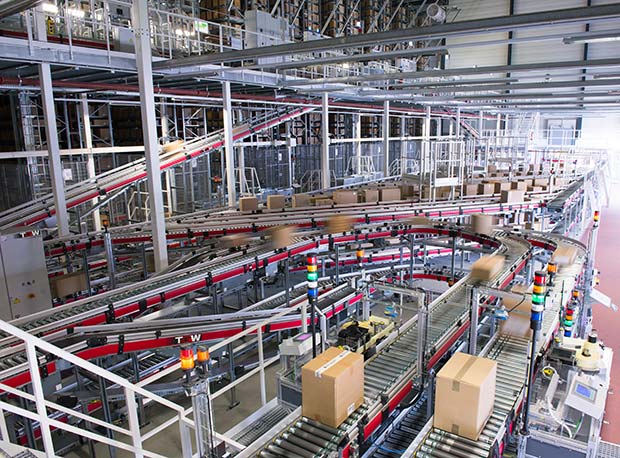As a part of the aftersales market, spare parts logistics can be an extremely profitable business. However, the right approach is essential. Studies show that companies are currently only tapping into one quarter of the global sales potential in this sector. Unlocking this potential requires appropriate preparations and investments.
 “Customers in the B2C segment are used to high quality, fast deliveries. B2B customers expect the same. This is why high availability and agile logistics matter. In other words: only those who offer a high level of service can establish a close relationship with their customers and will survive,” says Erich Schlenkrich, Industry Manager at TGW Logistics Group.
“Customers in the B2C segment are used to high quality, fast deliveries. B2B customers expect the same. This is why high availability and agile logistics matter. In other words: only those who offer a high level of service can establish a close relationship with their customers and will survive,” says Erich Schlenkrich, Industry Manager at TGW Logistics Group.
Customers expect easy ordering options on all channels, fast deliveries, short response times and high availability.
Automation is key
Just like in food or fashion logistics, a state-of-the-art logistics system has to feature the right degree of automation to ensure that the requirements for quick delivery can be fulfilled. Optimized processes and digitalisation create efficiency and transparency but establishing high availability in the distribution centre is not enough. Companies have to look at the entire supply chain.
Smart solutions and data analysis
The champions in spare parts logistics have established a global logistics network and a global, structured inventory management. And they have digitalized their processes. After all, the three most important questions for all logistics providers are the same: How can I respond to an unpredictable future and fluctuating demand? Second, how do I provide a customer service level that is both the highest and the most cost-effective? And third, how do I accomplish all this in view of the bottlenecks in personnel? Spare parts logistics are facing these same questions.
Smart solutions and data analysis provide an answer. But the implementation and application are different for every provider. That is why TGW is individually tailoring its solutions to the needs of every customer. FlashPick®, TGW’s smart goods-to-person order fulfilment solution for single piece picking, provides an answer to general questions regarding efficiency and economy. It Is based on a shuttle system for automated storage and retrieval of containers, combined with a high-performance one-to-one picking workstation, where a robot or a person pick. The process is very simple for the picker: The system presents one SKU container to pick from and one order container to pick into. After the picking process SKU containers return to the system while order containers can be routed towards the shipping area.
The design is flexible as well. Containers can be transported from any aisle to any pick station. In case a high level of automation is needed, FlashPick® can be combined with TGW’s Rovolution, an automated picking robot.
It is also possible to add a digital twin of Rovolution to the system. This is a complete digital representation which is connected to the physical system in real time and grows with it. The digital twin makes the behaviour visible, comprehensible and predictable. With its help, the logistics provider can analyse the data, learn from it and visualize it in 3D models.
“Another example of data analysis is the measuring of the electrical current draw in the KingDrive® rollers of our scalable conveying technology systems. If the actual value is different from the target value, the client can react promptly. Compared to conventional rollers, our high-performance rollers run nearly twice as long before they need replacement,” Schlenkrich said.
Smart maintenance and support
TGW also has a complete array of state-of-the-art tools for maintenance and support. The smart glasses TGW has been using for several years now is only one example. They allow to send information, images and data to the on-site employees in a live stream in order to solve problems.
Digital maintenance systems, such as TGW’s CMMS and condition-based monitoring are very useful tools. Condition-based monitoring uses sensors to acquire status data for central components, which are compared to the empirical data in TGW’s database. Based on this data, usage-based maintenance models are created. These allow for a faster intervention and a better prediction of required maintenance.
Future challenges
The world is changing. And as the current coronavirus shows very clearly: it is changing very rapidly. Alternative drive technologies, autonomous vehicles and artificial intelligence will also have an impact on how autonomous workshops organise their work. This will also have an effect on spare parts logistics, which has to adapt to this new reality. As said before, only those who offer a high level of service will survive on the market.




Comments are closed.